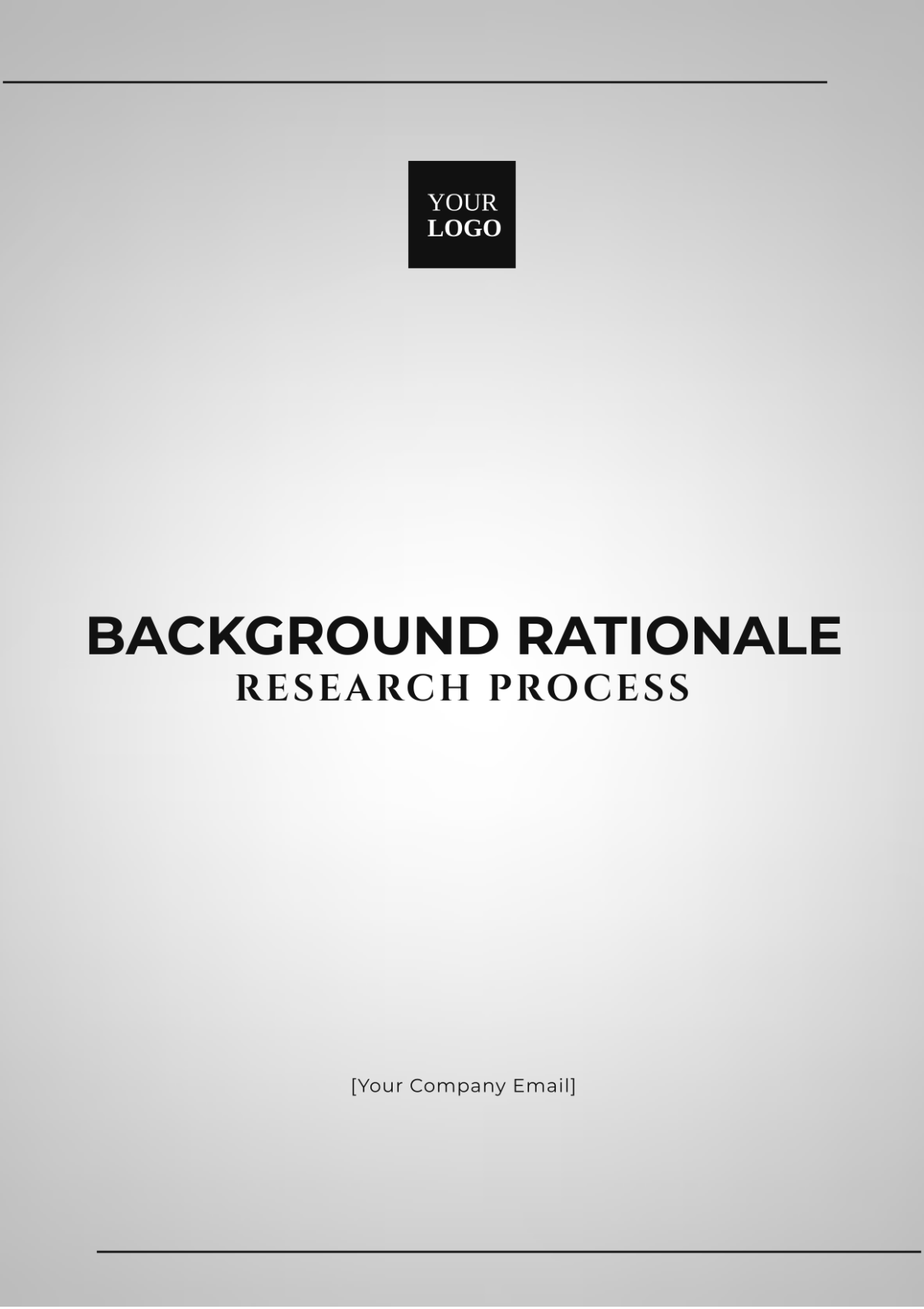Background Rationale Research Process
Prepared By: [Your Name]
Organization Name: [Your Company Name]
1. Introduction
The Background Rationale Research Process provides a structured overview of the justification and reasoning behind this research study. It is designed to present a comprehensive understanding of the issue at hand, establish the necessity for the research, and outline the study's objectives. This document aims to frame the context and highlight the importance of the research initiative.
2. Problem Statement
In the rapidly evolving technological landscape of 2050, there is a noticeable gap in understanding the long-term effects of artificial intelligence (AI) on job markets. Despite the increasing integration of AI across various sectors, there is limited empirical evidence regarding how AI adoption influences employment patterns, job quality, and worker satisfaction. This research aims to address this gap by investigating the impact of AI technologies on employment dynamics in the coming decades.
3. Research Objectives
To assess the impact of AI adoption on employment rates across different sectors by 2055.
To evaluate changes in job quality and worker satisfaction resulting from AI integration by 2060.
To identify potential strategies for mitigating negative effects and enhancing positive outcomes of AI on the workforce by 2065.
4. Justification/Rationale
As AI technologies continue to advance, understanding their effects on employment becomes increasingly crucial. The integration of AI presents both opportunities and challenges for the workforce. This research is essential for informing decisions related to workforce development, training programs, and policy interventions. By providing empirical evidence of AI's impact, the study will contribute to more informed strategies for managing technological transitions in the job market.
5. Literature Review
Existing literature from the past few decades highlights various aspects of AI's influence on employment. Studies have explored AI's role in automating routine tasks, which may lead to job displacement, while others emphasize the creation of new job opportunities in emerging fields. For instance, research by Smith et al. (2052) indicates that AI can enhance job efficiency but may also increase skills mismatch. Another study by Jones and Lee (2055) suggests that AI-driven innovation could lead to the emergence of new job categories and industries. This literature review provides a foundation for understanding the complex relationship between AI and employment, setting the stage for this research.
6. Methodology Overview
This study will employ a mixed-methods approach, combining quantitative and qualitative data collection techniques. A survey will be conducted across various industries to gather data on employment trends, job quality, and worker satisfaction by 2060. Additionally, in-depth interviews with industry experts and employees will provide qualitative insights into the effects of AI. Data analysis will involve statistical methods to identify trends and correlations, as well as thematic analysis for qualitative data.
7. Expected Outcomes
The research is expected to provide valuable insights into the effects of AI on employment dynamics. Anticipated outcomes include a detailed understanding of how AI adoption influences job rates, job quality, and worker satisfaction by 2065. The study will also offer practical recommendations for policymakers and businesses to address potential challenges and leverage opportunities created by AI technologies.
8. Conclusion
This Background Rationale Research Process outlines the critical need to investigate the impacts of artificial intelligence (AI) on employment as we approach 2050 and beyond. Addressing existing knowledge gaps, this research aims to provide valuable insights into AI’s effects on job markets and worker satisfaction, setting the stage for informed future studies and strategies.

















































